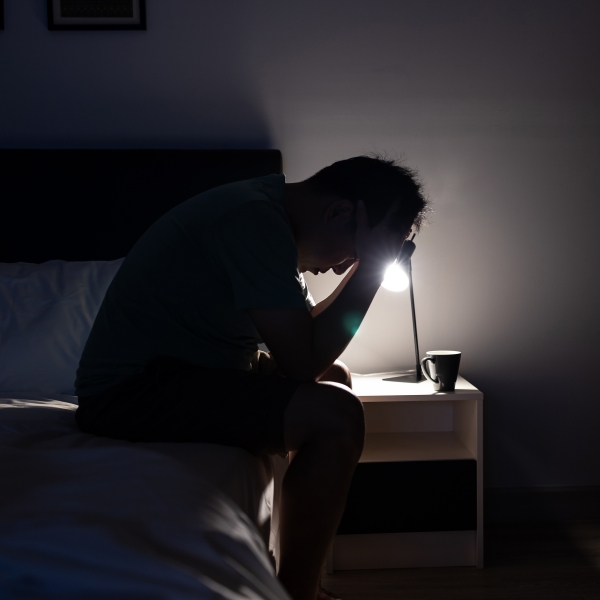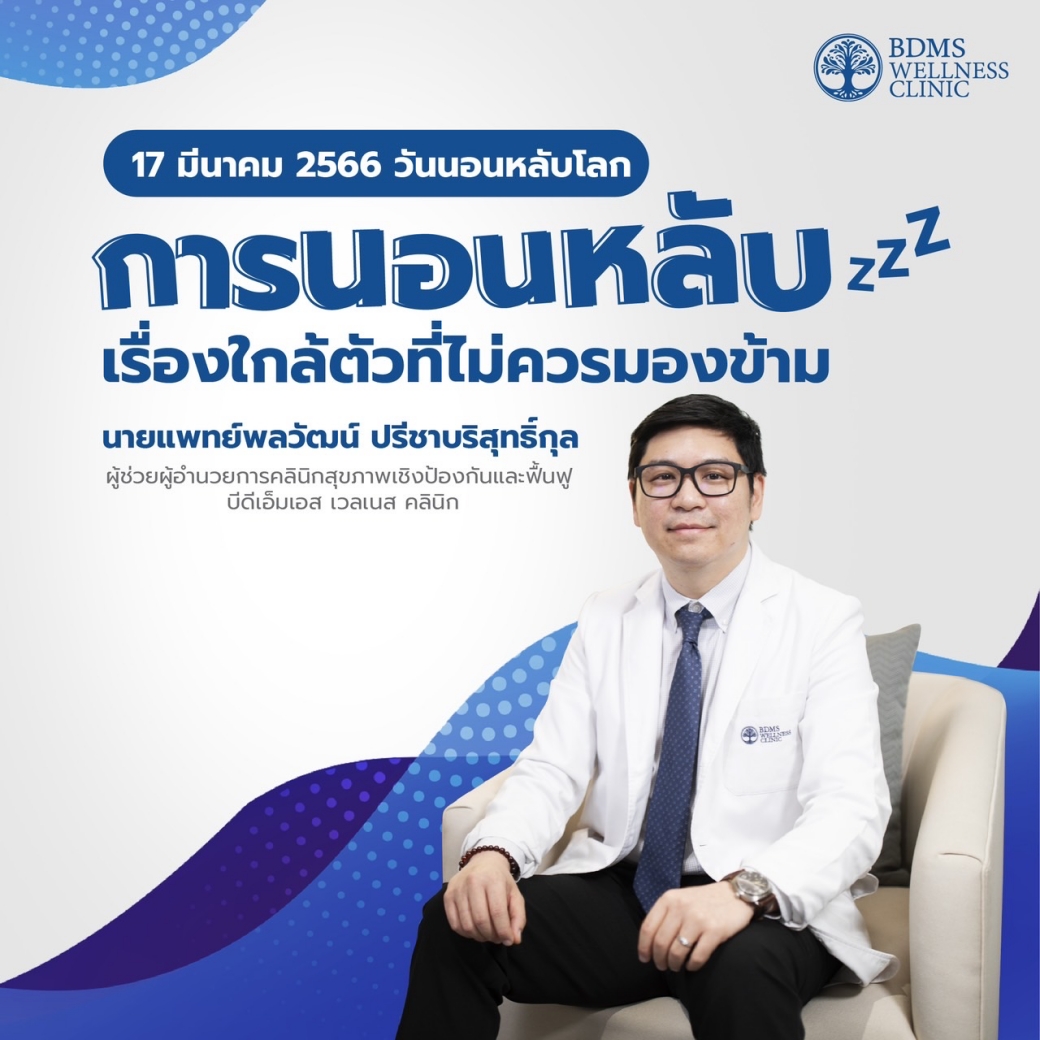Quality Sleep: Towards Global Health Equality
Sleep is not merely a restful activity; it's a fundamental pillar of well-being, akin to eating nutritiously or exercising regularly. As we commemorate World Sleep Day on March 15, 2024, under the theme of 'Sleep Equity for Global Health,' the spotlight is on ensuring quality sleep for all, regardless of race, age, location, or socioeconomic status. Quality sleep is essential for nurturing both body and mind.
The National Sleep Foundation (NSF) provides guidelines for optimal sleep duration based on age:
- Newborns (0-3 months): 14-17 hours per night
- Infants (4-11 months): 12-15 hours per night
- Toddlers (1-2 years): 11-14 hours per night
- Preschoolers (3-5 years): 10-13 hours per night
- School-age children (6-13 years): 9-11 hours per night
- Teenagers (14-17 years): 8-10 hours per night
- Adults (18-64 years): 7-9 hours per night
- Seniors (65 years and older): 7-8 hours per night
Dr.Amp - Tanupol Virunhagarun, M.D., President of Bangkok Association of Regenerative Health and The Study of Obesity (BARSO) and Chief Executive Officer of BDMS Wellness Clinic, advocates for Lifestyle Medicine and emphasizes that quality sleep involves more than just duration—it encompasses three key aspects:
- Sleep Duration Appropriate sleep duration according to age.
- Sleep Continuity Uninterrupted sleep from bedtime to waking up, with no more than 20 minutes of wakefulness during sleep.
- Sleep Depth Achieving deep sleep phases, characterized by decreased brain wave frequency to the Delta Wave range. During this stage, the body secretes growth hormone crucial for restoration and strengthening. Ideally, deep sleep should constitute 13-23% of total sleep time, translating to approximately 65-125 minutes in an 8-hour sleep cycle.
"Growth hormone secretion peaks between 11:00 p.m. to 1:30 a.m., but it requires time to enter deep sleep. Therefore, bedtime around 10:00 p.m. to 11:00 p.m. allows ample time for the body to initiate growth hormone release and facilitate comprehensive restoration"
explains Dr. Amp.
Our sleep cycles typically comprise two phases: NREM (Non-Rapid Eye Movement) and REM (Rapid Eye Movement). NREM includes three sub-phases: N1 (transition to sleep), N2 (light sleep), and N3 (deep sleep), lasting approximately 60-70 minutes. This is followed by REM sleep, or the dreaming phase, lasting about 20-30 minutes, before returning to NREM sleep. Each cycle lasts around 90 minutes, with 4-5 cycles occurring per night. Disruptions in sleep continuity, depth, or duration—such as insomnia, frequent awakenings, or obstructive sleep apnea—can compromise the integrity of these cycles, impacting overall health.
Addressing sleep-related issues necessitates thorough assessment and tailored interventions to address underlying causes effectively. Achieving sleep equality worldwide requires collective efforts to prioritize and promote quality sleep as a cornerstone of global health equity.
Understanding the nuances of sleep quality requires a multifaceted approach encompassing various assessment methods:
1. Questionnaires: These tools aim to gauge sleep quality and related issues. Examples include:
-
Pittsburgh Sleep Quality Index: PSQI
Comprising 19 self-assessment questions and an additional 5 for bed partners, scoring ranges from 0 to 21, with scores above 5 indicating potential sleep disturbances.
-
Epworth Sleepiness Scale: ESS
With 8 questions assessing daytime sleepiness, scores exceeding 10 suggest significant sleepiness, while scores above 18 indicate excessive sleepiness or hypersomnia.
-
Sleep Apnea Scale of Sleep Disorders Questionnaire: SA-SDQ
A 12-question survey assisting in assessing sleep-related breathing disorders, commonly used for obstructive sleep apnea (OSA) screening.
2. Laboratory Examinations: These tests delve into underlying conditions impacting sleep quality, including:
-
Hemoglobin and Hematocrit Blood Tests
Anemia, often linked to restless legs syndrome, can influence sleep quality.
-
Thyroid Hormone Testing
Hyperthyroidism may lead to difficulties initiating sleep and frequent nocturnal awakenings, while hypothyroidism can affect overall sleep quality.
-
Insulin-like Growth Factor I (IGF-1) Testing
Decreased IGF-1 levels correlate with sleep problems, indicating potential disruptions in sleep duration or quality.
3. Sleep Physiology Examination (Polysomnography - PSG)
Regarded as the gold standard for diagnosing sleep disorders, particularly those related to the respiratory system like OSA. PSG involves monitoring various physiological parameters such as:
- Electroencephalography (EEG): Measures brain wave activity.
- Electro-oculogram (EOG): Examines eye movements.
- Electromyography (EMG): Tracks muscle activity.
- Electrocardiogram (ECG): Monitors heart activity.
- Pulse Oximetry: Measures blood oxygen saturation.
- Respiratory Parameters: Assess breathing patterns, including the severity of sleep apnea.
These tests provide comprehensive insights into:
- Sleep Architecture, indicating sleep efficiency, REM latency, and arousal frequency.
- Stage of Sleep, revealing time spent in different sleep stages.
- Body Position, body movements during sleep.
- Respiratory Parameters, such as Apnea-Hypopnea Index (AHI) and Respiratory Disturbance Index (RDI).
- Blood oxygen levels and heart rate.
Sleep physiology examinations can be conducted in specialized centers or even at home with expert assistance. The results elucidate the severity and underlying causes of sleep issues, guiding precise interventions for improvement.
Dr. Amp emphasizes the significance of cultivating healthy sleep habits as a cornerstone of effective treatment and prevention of sleep issues. Here are some actionable steps that can be initiated starting today:
- Consistent Sleep Schedule: Maintain a regular sleep-wake cycle, including holidays. Aim to retire before 10:00 p.m. and secure at least 8 hours of sleep, with a target of 20% deep sleep duration.
- Manage Sleep Environment: Minimize sleep disturbances by using earplugs to reduce noise, wearing eye masks to block light, and adjusting room temperature for optimal comfort.
- Bedtime Routine: Reserve the bed solely for sleeping. Avoid using it for work, entertainment, or eating. Retire to bed only when genuinely sleepy.
- Regular Exercise: Incorporate regular physical activity into your routine, which enhances sleep quality. However, refrain from vigorous exercise within 3 hours of bedtime.
- Medical Evaluation: If you have underlying health conditions, ensure your medications do not interfere with sleep. Discuss any concerns regarding medication side effects with your healthcare provider.
- Limit Caffeine Intake: Refrain from consuming caffeine-containing beverages like coffee, green tea, or soft drinks at least 6 hours before bedtime.
- Avoid Alcohol and Smoking: Both alcohol and smoking can disrupt sleep quality. Even a single cigarette can diminish deep sleep by 2 minutes.
- Light Meals Before Bed: Opt for smaller, easily digestible meals at least 3 hours before bedtime to minimize discomfort from bloating or acid reflux.
- Mindful Eating: Reduce consumption of starch, sugar, and fruits during dinner to mitigate fluctuations in blood sugar levels, which can disrupt sleep.
- Relaxation Techniques: Engage in calming activities before bedtime, such as meditation or gentle stretching, to promote relaxation and prepare the body for sleep.
As we mark World Sleep Day 2024, Dr. Amp urges everyone to prioritize sleep, recognizing its pivotal role in healthcare and as one of the 'Six Pillars of Lifestyle Medicine.' Prompt intervention is essential when sleep issues arise, tailored to individual needs and circumstances. Embracing the theme of 'Sleep Equity for Global Health,' let us collectively advocate for quality sleep, fostering a foundation for universal health and well-being.
Sleep Equity for Global Health
Reference
- Paruthi S, Brooks LJ, D'Ambrosio C, Hall WA, Kotagal S, Lloyd RM, Malow BA, Maski K, Nichols C, Quan SF, Rosen CL. Consensus statement of the American Academy of Sleep Medicine on the recommended amount of sleep for healthy children: methodology and discussion. Journal of clinical sleep medicine. 2016 Nov 15;12(11):1549-61.
- Hirshkowitz M, Whiton K, Albert SM, Alessi C, Bruni O, DonCarlos L, Hazen N, Herman J, Hillard PJ, Katz ES, Kheirandish-Gozal L. National Sleep Foundation’s updated sleep duration recommendations. Sleep health. 2015 Dec 1;1(4):233-43.
- National Sleep Foundation. What Is Sleep Quality? [Internet]. Washington, DC: National Sleep Foundation; 2020 Oct 28 [cited 2023 Jan 19]. Available from: https://www.thensf.org/what-is-sleep-quality/
- Intha J, Pramokchon P, Khoenkaw P, Osathanunkul K. Analysis of effective sleep through logistic regression. 2020 Joint International Conference on Digital Arts, Media and Technology with ECTI Northern Section Conference on Electrical, Electronics, Computer and Telecommunications Engineering (ECTI DAMT & NCON). 2020 Mar; doi:10.1109/ectidamtncon48261.2020.9090702
- Institute of Medicine (US) Committee on Sleep Medicine and Research; Colten HR, Altevogt BM, editors. Sleep Disorders and Sleep Deprivation: An Unmet Public Health Problem. Washington (DC): National Academies Press (US); 2006. 2, Sleep Physiology. Available from: https://www.ncbi.nlm.nih.gov/books/NBK19956/
- Methipisit T, Mungthin M, Saengwanitch S, Ruangkana P, Chinwarun Y, Ruangkanchanasetr P, Panichkul S, Ukritchon S, Mahakit P, Sithinamsuwan P. The development of sleep questionnaires Thai version (ESS, SA-SDQ, and PSQI): linguistic validation, reliability analysis and cut-off level to determine sleep related problems in Thai population. J Med Assoc Thai. 2016 Aug 1;99(8):893-903.
- Green ME, Bernet V, Cheung J. Thyroid dysfunction and sleep disorders. Frontiers in endocrinology. 2021 Aug 24;12:725829.
- Gerstenslager B, Slowik JM. Sleep Study. [Updated 2023 Aug 14]. In: StatPearls [Internet]. Treasure Island (FL): StatPearls Publishing; 2024 Jan-. Available from: https://www.ncbi.nlm.nih.gov/books/NBK563147/
- Rundo JV, Downey III R. Polysomnography. Handbook of clinical neurology. 2019 Jan 1;160:381-92.
- Douglas JA, Chai-Coetzer CL, McEvoy D, Naughton MT, Neill AM, Rochford P, Wheatley J, Worsnop C. Guidelines for sleep studies in adults-a position statement of the Australasian Sleep Association. Sleep Med. 2017 Aug 1;36(Suppl 1):S2-2.
- Jaehne A, Unbehaun T, Feige B, Lutz UC, Batra A, Riemann D. How smoking affects sleep: a polysomnographical analysis. Sleep medicine. 2012 Dec 1;13(10):1286-92.
- Zhang Y, Sun Q, Li H, Wang D, Wang Y, Wang Z. Lower serum insulin-like growth factor 1 concentrations in patients with chronic insomnia disorder. Frontiers in Psychiatry. 2023 Apr 21;14:1102642.




